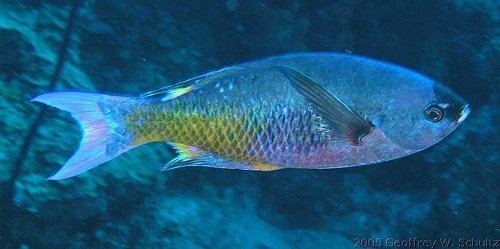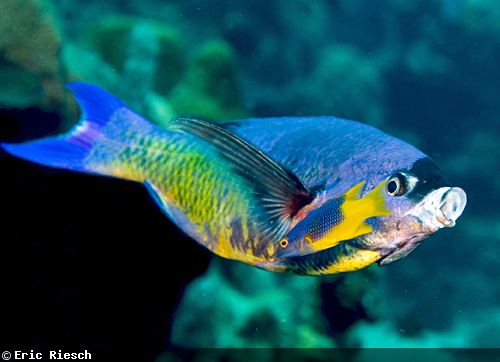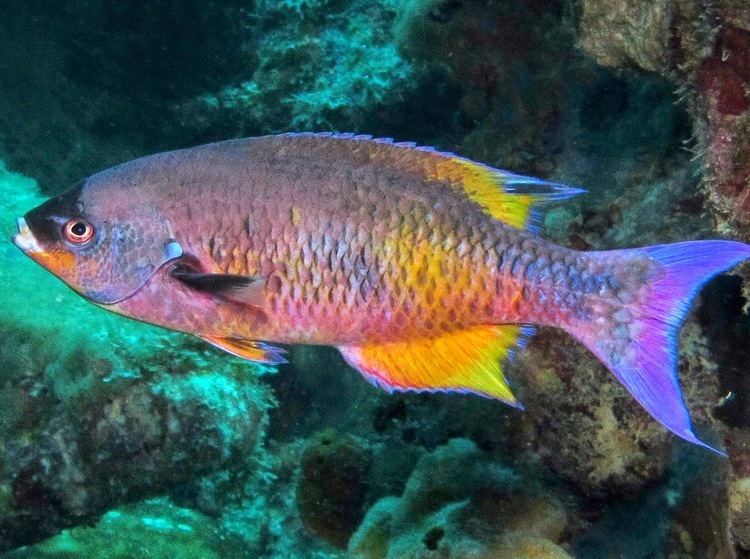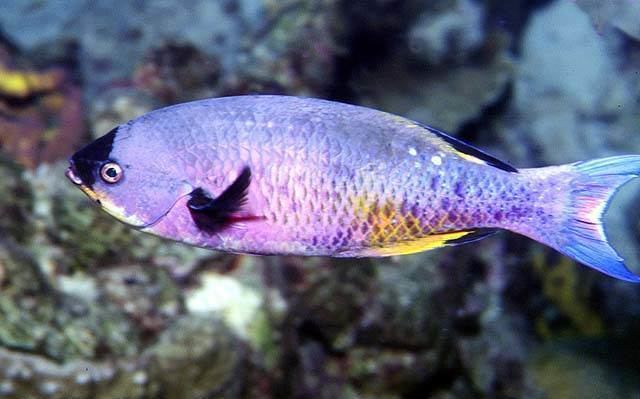Order Perciformes Higher classification Clepticus | Phylum Chordata Family Labridae Scientific name Clepticus parrae Rank Species | |
 | ||
Similar Clepticus, Wrasse, Yellowhead wrasse, Spanish hogfish, Puddingwife wrasse | ||
The creole wrasse (Clepticus parrae) is a species of wrasse native to the western Atlantic Ocean.
Contents
Creole wrasse
Description

The creole wrasse is a small wrasse, with males reaching around 30 cm (1 ft) in length, while females are smaller. It has a typical wrasse shape. Like many wrasse, it changes colour markedly during its lifetime, with juveniles being almost completely violet-purple. As it matures, it develops a yellow patch on the rear part of its body.
Distribution
The species is found throughout the tropical waters of the western Atlantic Ocean from Florida to Brazil, including Bermuda Islands,the Caribbean Sea, and the Gulf of Mexico.
Ecology

This wrasse lives in groups, aggregating on coral reef slopes, down to around 100 m (330 ft) in depth. These groups feed on plankton, including small jellyfish, pelagic tunicates, and invertebrate larvae. The creole wrasse is active by day, and at night it retreats alone to a rocky crevice in the reef to sleep.
Reproduction

The creole wrasse is a protogynous hermaphrodite; the largest fish in a group is a dominant breeding male, while smaller fish remain female. If the dominant male dies, the largest female changes sex. The mature males congregate at leks to breed, at which they display and are approached by females before mating with them.
